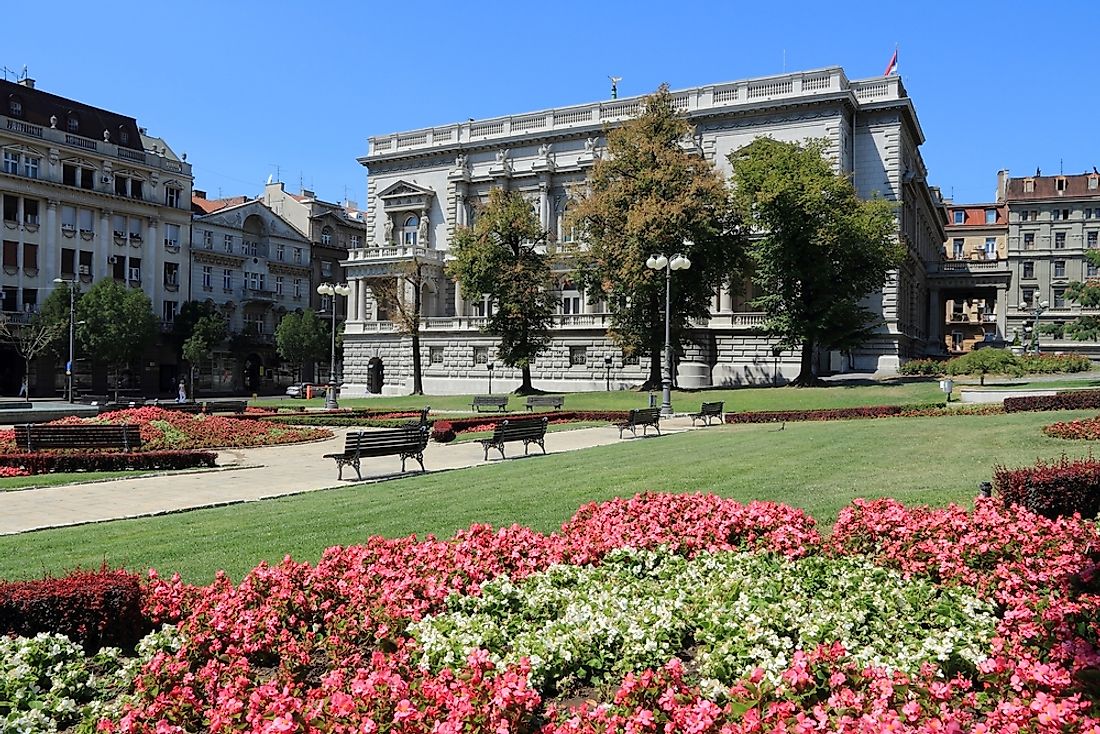What Is The Capital Of Serbia?

Belgrade is the capital city of Serbia as it is the seat of the country's government. Belgrade is also the largest city in the country, occupying an area of 138.98 square miles and having a population of over 1.166 million inhabitants. Belgrade is the economic hub of Serbia, with most local companies found in the city. Belgrade is also the cultural heart of the country and hosts many important cultural events such as the Music Festival, the Beer Fest, the Theatre Festival and the Film Festival. Serbia’s National Museum is located in Belgrade, and is the largest of its kind in the country, having over 400,000 exhibits.
History Of The Capital City Of Serbia
Belgrade is among the oldest extant cities in Europe and has been inhabited since the 6th millennium BC. The city was the inhabited by the Vinca Culture between the 58th and 45th centuries BC. The city was once known as Sigidun, a name it obtained after the Celts conquered it in 279 BC. The Romans later conquered the city during Emperor Augustus’ reign. Other empires and kingdoms would later lay claim on Belgrade including the Byzantine Empire, the Bulgarian Empire, the Frankish Empire, the Kingdom of Hungary and the Ottoman Empire. Belgrade was established as the capital city of Serbia in 1841 but was then divided into two; Northern Belgrade which was under Habsburg, and Southern Belgrade. The city was unified in 1918 and became the capital city of the then the newly-established Kingdom of Yugoslavia. Belgrade was established as the capital of Serbia in 2006.
Geography And Climate Of Serbia's Capital City
Belgrade is situated in the northern region of Serbia, on the confluence of the Sava and Danube rivers. The oldest part of the city is found on the right banks of the rivers while the New Belgrade is found on the left banks of the rivers. The city is situated at an elevation of 383 feet above sea level. The Kosmaj Mountains and the Avala Mountains are found near Belgrade. The highest point of the city is Torlak Hill which has an elevation of 994 feet. There are numerous steep slopes in Belgrade, some inclining up to 90 degrees. Belgrade experiences a humid subtropical climate with four seasons. The precipitation in the city is uniformly spread throughout the year, with June being the wettest month.
Education In The Capital Of Serbia
Belgrade is home to some of the best learning institutions in Serbia. There are about 195 elementary schools and 85 secondary schools in Belgrade. The city has two public universities including the University of Belgrade. Established in 1808, the University of Belgrade is the oldest institution of higher learning in Serbia. The university has an enrollment of 90,000 students, the largest of any institution in Serbia. Other universities in Belgrade are the Union University, the Megatrend University, the University Singidunum and the University of Arts.
Transport And Communication In The Capital Of Serbia
As the capital city of Serbia, Belgrade has the best transport and communication facilities in the country. The headquarters of Serbia’s national broadcaster, Radio Television Serbia (RTS) are based in Belgrade. Another leading broadcaster in Serbia, RTV Pink is also based in Belgrade. 1Prva, a top Serbian media company, is based in the city. There are numerous daily newspapers which are published in Belgrade including Kurir, Danas, and Politika. Serbia’s main commercial airport, the Nikola Tesla Airport, is situated in Belgrade and was in 2014 established as the second-fastest growing major European airport after passenger numbers in the airport reached an unprecedented 4 million passengers. The two rivers in Belgrade, the Sava and the Danube, allow for water transport, and the Port of Belgrade facilitates this mode of transport.







